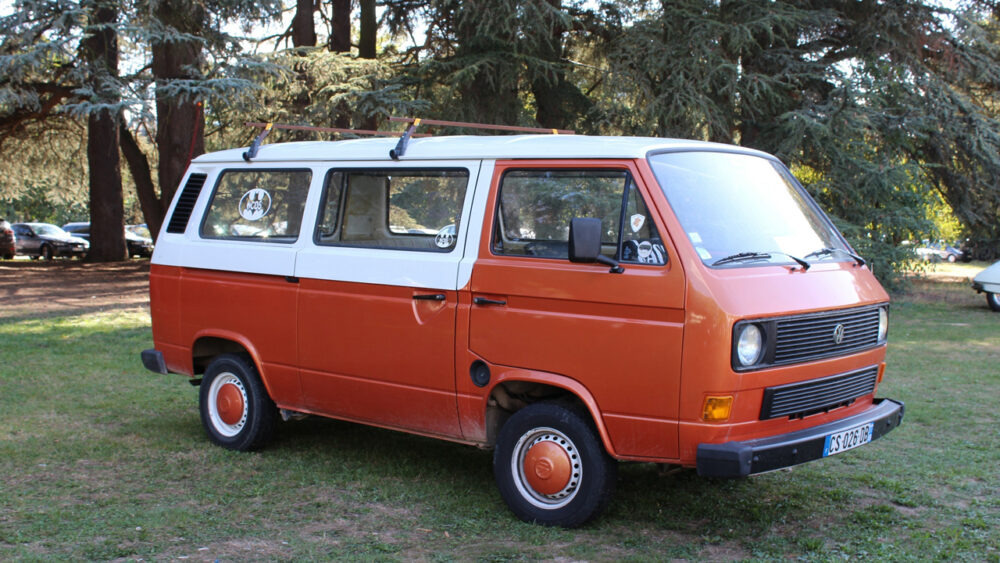Stephan’s Auto Haus, located in Sacramento, CA, is a full service auto repair shop specializing in German, Japanese and domestic automobiles and the place to go for a Volkswagen Vanagon engine conversion.
Below is the article as it appeared on the Sacramento Press website.
VW Vanagon Engine Conversions Specialty For Popular Local Auto Shop
By Ken Pierce
Published on April 14, 2010 at 11:17AM
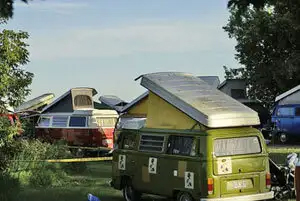
America is in love with their cars and there is no getting around that. Pick just about any automobile and you can find a car club or Facebook group of fans who spend their time chatting about their cars, giving each other repair tips and who will host the next meeting. One carmaker outshines the others in the area of loyal followers and collectors – Volkswagen. Here in Sacramento, Stephan White has made a name for himself among VW owners from all over the nation.
White owns Stephan’s Auto Haus and on a recent trip to get my Subaru Outback an oil change (yes there is an Outback club, no I do not belong), I couldn’t help but notice a 1988 VW Fox sitting on the floor with all its guts pulled out of the chassis. The Volkswagen Fox was produced in Brazil and imported to the U.S. from 1987 to 1993.
To my amazement the Fox was being prepared for replacement of the old fuel injected 1.8-liter engine with a sleek new electric motor in the front and eight 12-volt gel-cell batteries where the fuel tank was in the back. Four more batteries were to be installed up front along with a small 12-volt battery to “start-up” the system. White told me when the baby hits the road it will cruse at 65 mph and should get approximately 100 miles to a charge to its batteries making the converted VW the greenest Fox on the road.
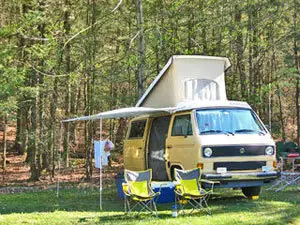
While the Electric Vehicle conversion was a special project, what the shop is most known for across the United States is their VW Vanagon engine conversions. For more than 50 years (beginning in 1949) VW imported the Bus to the US as well as several other countries. The VW Bus soon became an icon of sorts. Today most look upon the VW Bus as a “hippie” van and thoughts of Woodstock come to mind.
In 1979 VW stopped building the bus to begin production on the “Vanagon” which was supposed to be the next best thing and survive 50 more years like the bus did. Well…that didn’t happen.
From the beginning the VW Vanagon was doomed. The horizontally opposed 4 cylinder engine in production from 1983.5 to 1991 was basically a modified air cooled to water cooled VW Bus/Beetle engine which was way too underpowered for the demands buyers expected. From 1986 to 1991 the Vanagon engine’s size went from a 1.9 liter to a 2.1 liter but was still not powerful enough to push (engine in the rear) a heavy VW Westfalia Vanagon Camper up a steep grade with enough speed to sustain any forward movement.
Volkswagen Westfalia Campers were conversions of Volkswagen Type 2 (better known as Transporter or Micro-Bus) The Transporter vehicles were imported here from 1949 to 1979. The Vanagon was produced and sold in 1980 overseas and was only imported to the US after 1991. The VW Eurovan took over from there and was sold in the US from 1993 to 2003. VW subcontracted the modifications to Westfalia-werke (most often called Westfalia) in Rheda-Wiedenbuck, Germany. Various models of the Camper Vans and options were constructed.
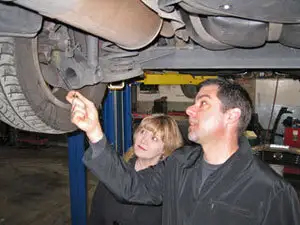
VW Campers were available from Volkswagen dealers throughout the world. Vehicles were also delivered via the Tourist Delivery program where a customer would pick up their new van in Germany, drive it around Europe, then transport it home, typically to the USA. Many VW campers were purchased by U.S. Servicemen and brought back to the States in the 1950’s and 1960’s.
Most Westfalia Camper models were built with various foldout seat arrangements for sleeping, birch plywood cabinetry for storage, ice box or cold box, sink, water storage and pump, electrical hookups, curtains, and a laminated folding table.
Guys like Stephan who enjoys camping with his partner knew the VW Vanagon body was extremely strong and performed with high marks in crash testing for a vehicle of its size. “Driving the van you would get the feeling of being up high enough to see traffic ahead and still have the handling of a smaller vehicle while getting decent fuel mileage and the ability to park in tight places. No other manufacturer that made Vans could compete with this,” explained White.
So White looked around and bought his first 2-wheel-drive Vanagon from an older lady here in Sacramento for $2400. The Van had front-end damage so he decided to completely strip and restore the body, transmission and engine. Not long after listing the newly restored “Westy” White’s phone rang off the hook from eager buyers. The first person that happened to drive in from the Bay Area took one look and bought it for a whopping $15,000. The redo cost White $8000 so he came out way ahead.
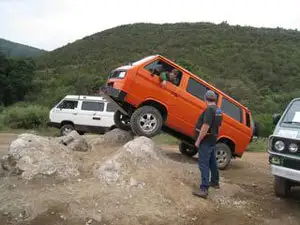
With the extra money in hand White sought out and found a 1990 Vanagon Westfalia Syncro Camper with its original engine intact. The kid he bought it from had taken a year and toured all over the US. In that one year he clocked approximately 29,000 miles.
Except for scratches the body had all up and down its sides, the Van had all the amenities White was looking for in a camper. But after driving it around for a year he decided that something would have to be done about its lack of power it had for the rougher terrain he was longing to traverse.
“I did a lot of research on different VW engines and found that the 1.8T was the only Turbo charged engine that was classed as an ultra low emissions engine for California at that time and still may be,” said White. The cost to install vs. power output, fuel economy and reliability was what he was looking for in an engine and the 1.8T fit the bill.
After overcoming several obstacles like having to fabricate a box to accommodate the few inches the engine needed overhead in the rear of the Camper, White completed the restoration and engine conversion and was ready to hit the road. With its unique 4-wheel drive capacity his Vanagon Westfalia Syncro Camper possessed, Stephan and his partner could choose just about anywhere on or off-road they felt like traversing and were able to do so safely and economically, keeping their traveling carbon footprint to a minimum.

As a true proud VW owner White showed off his decked out Camper and engine conversion skills to other VW folks (officially called “Volks”) and like a wildfire word got around the community that Stephan’s Auto Haus is the place to go for Van engine conversions. Soon inquires began to flow in from all over the United States. So far, White has completed 15 Van engine conversion projects. His next project is currently on its way from Alaska to his shop as of this writing. His last conversion was trucked in from Colorado and when completed the owner flew to Sacramento and happily drove his Syncro back home. There was only one Sacramento owner who took advantage of White’s skills at Van engine conversions. Stephan says the last he heard from the guy he was somewhere in Canada exploring “his” unknown.
Stephan’s Auto Haus is a full service auto repair shop specializing in German, Japanese and domestic automobiles and the place to go for a “Vanagon” engine conversion. Voted “Best Auto Repair” in the Sacramento News and Review. The shop is located at 3950 Attawa Ave., Sacramento, CA 95822 — (916) 456-3040 — www.StephansAutoHaus.com.
To read this article on the Sacramento Press website, visit

